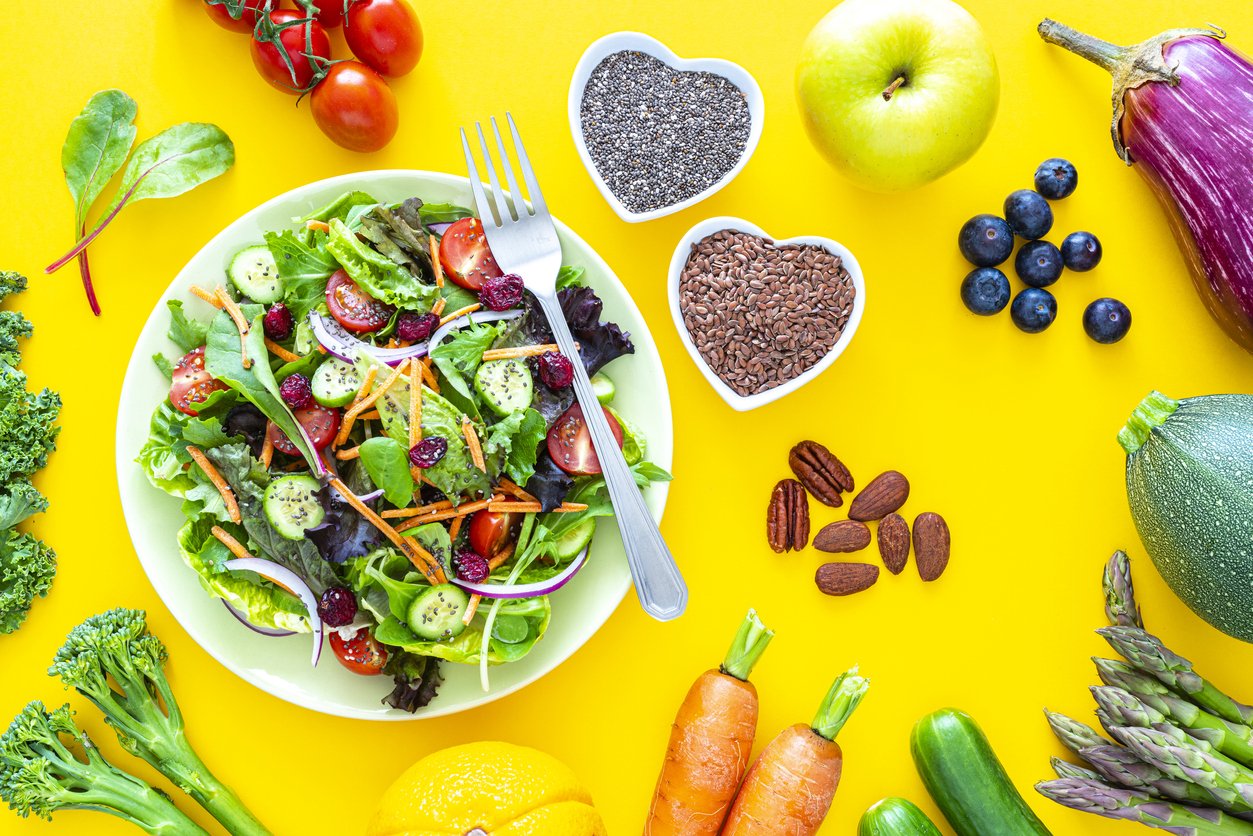Pop musicians have always been fascinated by fire. From The Doors’ “Light My Fire” to Bruce Springsteen’s “I’m on Fire” to P!nk’s “Just Like Fire,” artists have sung about the pains and pleasures of heat, conflagration, and unbridled passion.
Fire, in these and many other songs, is a complicated thing, both desired and uncontrollable.
In human history, fire is both a blessing and a curse as well. Tamed, it gave our ancestors protection against things that go chomp in the night and allowed us to cook food and smelt metal. Wild, it destroyed homes, villages, and crops.
Even when under our control, fire can cause blowback — figurative and literal. One example: Our modern addiction to fire, in the form of burning fossil fuels, is heating up the planet and threatening the ecosystems upon which all life depends.
Fire plays a dual role in our bodies as well, in the form of inflammation (from Latin inflammatio, meaning “to set on fire”). In moderation and under control, inflammation helps us survive injuries and exposure to pathogens. But out of control, inflammation can lead to all manner of chronic disease — including pop music’s favorite meme, the broken heart. (I’m still waiting for the songs about nonalcoholic fatty liver disease, colon cancer, and asthma — and no, “Every Breath You Take” doesn’t count.)
Normal vs Chronic Inflammation

Good inflammation is the body’s natural defense response to injury. It focuses your immune system’s attention on fighting a perceived threat — often bacteria or viruses or damage from foreign invaders, like toxins. The immediate response of inflammation in the body is called the acute phase response.
For example, think of what your body naturally does in response to a cut or bruise — it sends the “first responder” white blood cells and a bunch of other immune cells to contain and start healing the damage. A swollen joint after an injury is likewise an acute inflammatory response — bathing the affected area in fluids to protect it and allow tissues to regenerate. A sore throat that accompanies a cold or flu is another example of helpful inflammation. Any time part of your body becomes reddened, swollen, hot, and often painful, that’s acute inflammation in action. And some amount of inflammation is usually necessary for your body to start healing.
The problem is when inflammation goes from being a quick response to a singular event — like a cut, injury, or infection — and becomes chronic. If your immune system is constantly responding to messages that something in your body is in big trouble, then inflammation can go from being an adaptive survival response to an actual cause of disease.
Most health experts now agree: Chronic inflammation is linked with many, if not all, major diseases of our times. And our bodies become more susceptible to the damages of inflammation as we age.
So the logical question is, what causes chronic inflammation, and is there anything you can do about it?
Using Diet to Combat Inflammation
And the happy answer is yes: Through lifestyle choices, you can reduce the amount of chronic inflammation in your body. And one of the main tools at your disposal is your diet. Eating an anti-inflammatory diet and consuming foods and beverages that fight inflammation are important steps to take for your health.
In this article, we’ll look at why chronic inflammation is damaging to health, what to include in an anti-inflammatory diet, and a few foods (and recipes) that are excellent for fighting inflammation.
Why Is Chronic Inflammation Bad for You?

A healthy body can identify trauma or foreign invaders and deal with them quickly. But when the immune system isn’t functioning at its best, it can’t do its thing and get rid of whatever is causing the inflammation. Instead, you can develop chronic, low-grade inflammation that may last for several months or even years.
Chronic inflammation can then lead to chronic diseases (or noncommunicable diseases, meaning they’re not contagious), which the World Health Organization has called one of the greatest threats to human health. Some research even suggests chronic inflammatory diseases may be responsible for 50% of deaths in the world today.
It might surprise you to learn that these are all examples of inflammatory diseases or disorders:
- Type 2 diabetes
- Alzheimer’s and other neurodegenerative diseases
- Cancer
- Autoimmune diseases
- Inflammatory bowel diseases
- Cardiovascular disease
- Stroke
- Nonalcoholic fatty liver disease (NAFLD)
- Chronic kidney disease
And in the US, inflammatory diseases and disorders like these are responsible for an estimated $1.1 trillion in health care costs every year. Over half of Americans and nearly one-third of Europeans are dealing with at least one chronic disease. So what is the cause of such pervasive inflammation in our lives?
What Causes Chronic Inflammation?
Chronic inflammation is often considered to be the effect of an “overactive” immune system — as though your immune function is confused or malfunctioning. But is this always the case? Or do we also live in an increasingly toxic and stressful world?
Many people today are overwhelmed by environmental toxins such as endocrine-disrupting and carcinogenic chemicals in everything from food to water to nonstick pans to household cleaners. Your body will respond to this exposure like it would to any injury, using inflammation to try and heal. But concurrent or consistent exposure to low levels of toxins doesn’t allow the body to get rid of the perceived threat. Instead, it persists and wreaks havoc on the body. And the inflammatory response itself starts causing damage, like the Talking Heads sang: “Fighting fire with fire.”
The same effect can be seen in other causes of chronic inflammation, including:
- Infectious organisms like fungi, viruses, bacteria, and parasites
- Obesity and sedentary behavior
- Dysbiosis in the gut
- Diet and food allergies
- Stress
- Lack of sleep
To combat inflammation, we need to help our bodies cope with what amounts to a continuous onslaught of immune triggers. And while some causes of chronic inflammation are not completely in your control, one of the best ways to help your body fight inflammation is to eat an anti-inflammatory diet.
How to Eat an Anti-Inflammatory Diet

The first step in fighting chronic inflammation through diet is to eliminate or minimize unhealthy, inflammation-causing foods: processed foods, refined sugars and sugar-sweetened beverages, refined carbohydrates (such as white flour bread and pasta), and red and processed meats. Many of these foods contribute to oxidative stress and cellular dysfunction in the body, which increase the formation of harmful chemicals and compounds that trigger an inflammatory response.
Additionally, keeping your consumption of omega-6 fatty acids to a minimum and increasing your omega-3s appears to be helpful. An imbalance in these fatty acids is directly linked to higher levels of inflammation.
Studies have found that a ratio of omega-6s to omega-3s between 5:1 and 2.5:1 has been linked to increased longevity and lower rates of certain forms of cancer, cardiovascular disease, and inflammation overall. However, the ratio in the industrialized diet may be as high as 16:1. This is widely believed to be one of the drivers of chronic inflammation in the modern world.
So where does the excess omega-6 come from? Largely from vegetable oils like sunflower, corn, soybean, safflower, and cottonseed. (Olive and avocado oils are notable exceptions, as they do not contain significant amounts of omega-6.) Reducing or eliminating these vegetable oils from your diet not only lowers your omega-6 to omega-3 ratio but may also make the omega-3s more bioavailable.
As you remove some of these inflammatory stressors from your regular diet, the second step is to add in more of the good stuff. An anti-inflammatory diet is rich in whole plant foods that provide abundant phytochemicals and antioxidants. These compounds help the body repair itself by combating oxidative stress and binding to free radicals. Choosing organic produce as much as possible (especially when it comes to the Dirty Dozen) and properly washing fruits and vegetables will help reduce your exposure to toxic pesticides.
7 Anti-Inflammatory Foods to Add to Your Diet
While many foods have anti-inflammatory properties, here are seven that are especially powerful.
1. Berries
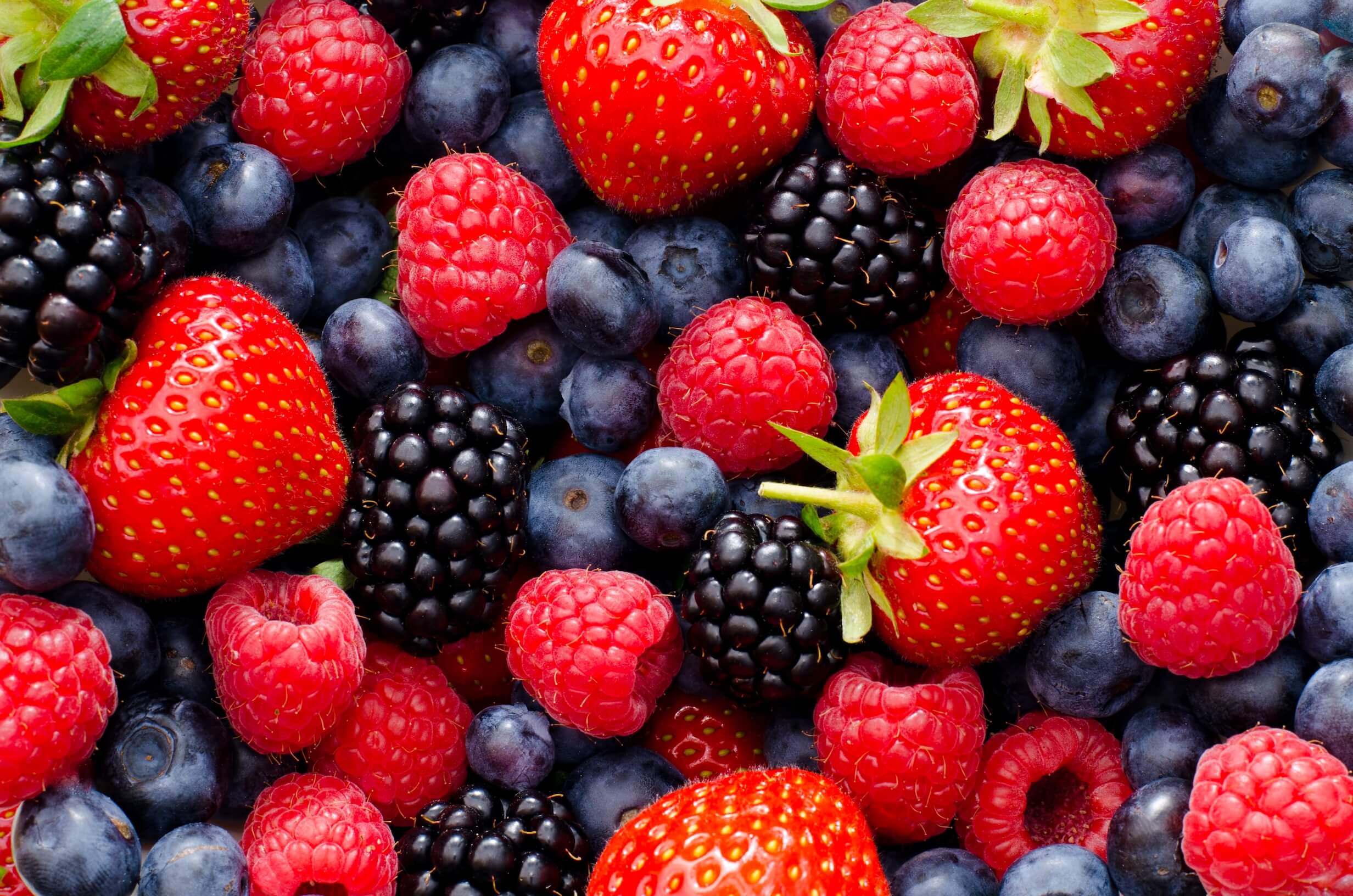
Berries are one of the healthiest foods you can eat and are represented by the second B in Dr. Joel Fuhrman’s GBOMBS acronym. Berries have a very high polyphenol content and are excellent sources of antioxidants. Many berries like strawberries and raspberries contain vitamin C, which fights oxidative stress and has a strong association with a lowered risk of chronic inflammatory diseases, including cancer, heart disease, and neurodegenerative disorders.
All berries are good for you, but if you want the most antioxidant bang for your buck, you can’t beat blackberries due to their anthocyanins.
For more on berries and how to use them, see our article here.
2. Leafy greens
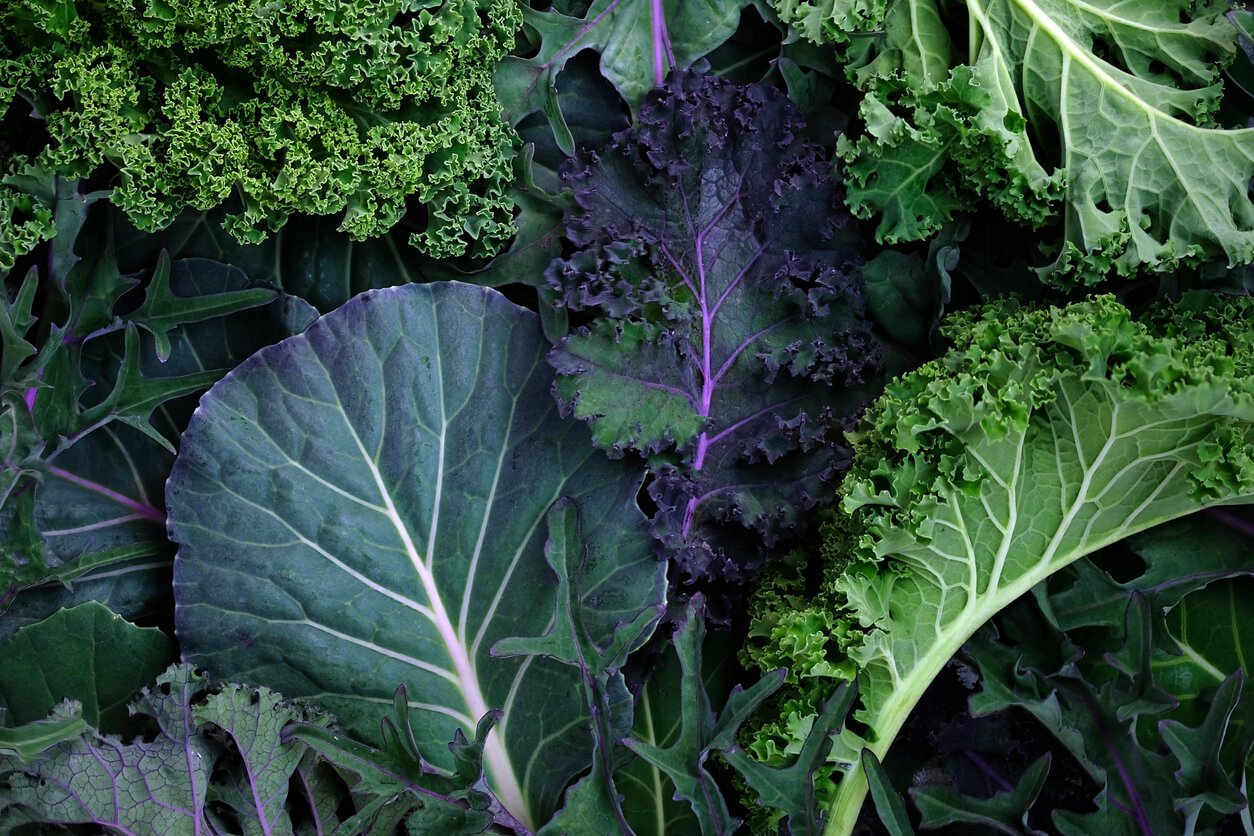
It’s hard to go wrong with eating more greens. They’re an invaluable part of any healthy diet. And they’re powerful inflammation fighters.
A 2020 study found that a diet high in dark green leafy vegetables reduced C-reactive protein (CRP) levels in patients, and thus decreased their risk of chronic disease. CRP is a marker for inflammation, and high levels can indicate the presence of a chronic inflammatory state.
Cruciferous greens like kale, arugula, and broccoli sprouts may be particularly anti-inflammatory due to the presence of glucoraphanin, which converts to sulforaphane in our guts. Studies have shown that sulforaphane can both inhibit and treat many inflammatory conditions, including inflammatory bowel disease (IBD), type 2 diabetes, and cardiovascular disease.
For more on leafy greens and how to use them, see our article here.
3. Alliums
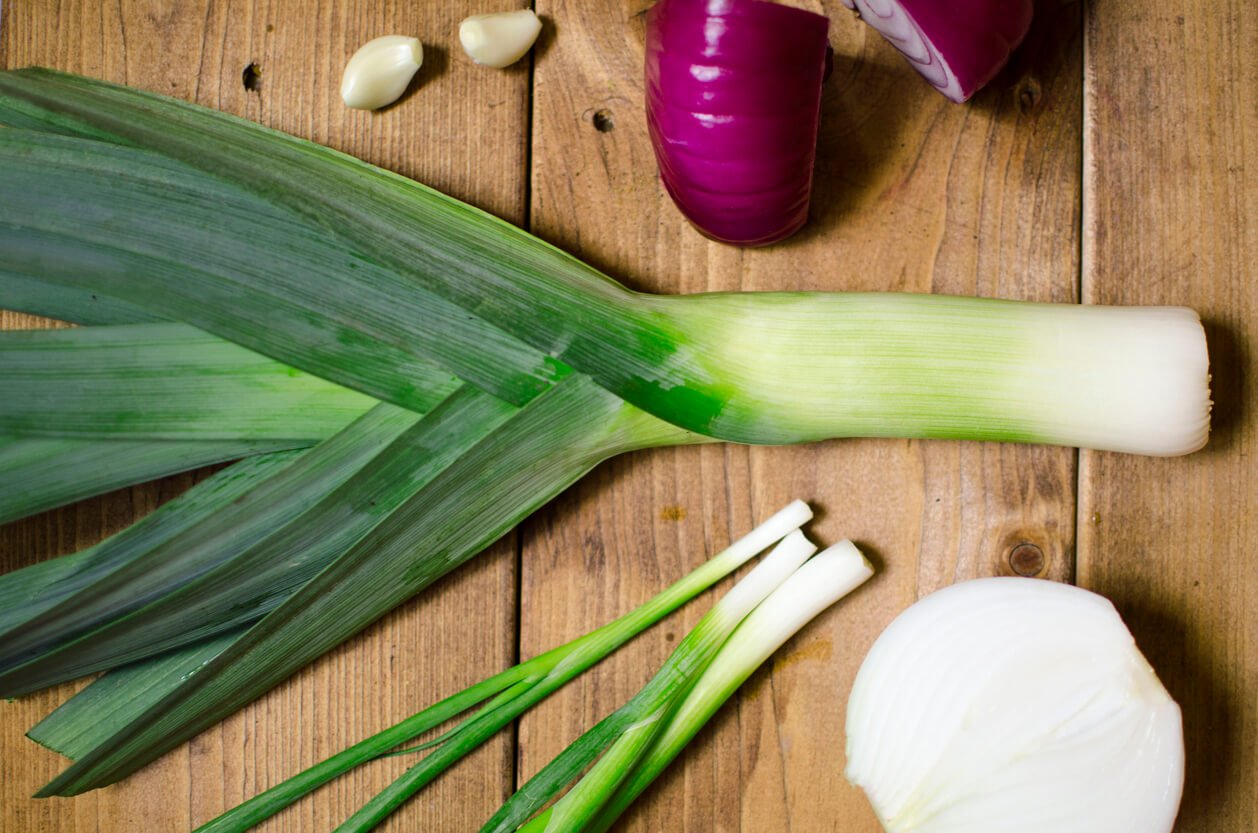
Garlic and other allium family veggies (like onions, chives, and leeks) won’t just keep away the vampires, they also play a role in preventing inflammation and related conditions. Alliums contain organosulfur compounds that inhibit the formation of inflammatory mediators and pathways. They’ve also been shown to reduce the risk of multiple types of cancer.
The flavonol quercetin — found in alliums — can even alleviate rheumatoid arthritis symptoms and may positively benefit other autoimmune diseases such as multiple sclerosis, lupus, and IBD.
For more on alliums and how to use them, see our article here.
4. Turmeric

Turmeric has a long history of medicinal usage and is an anti-inflammatory superstar. Regarded as the “King of Spices,” turmeric’s primary active compound, curcumin, may even help your body fight disease and inflammation by turning off potentially problematic genes.
Research has demonstrated that curcumin can obstruct inflammation through multiple pathways. And it’s beneficial for the prevention and treatment of osteoarthritis (as well as general aches and pains), type 2 diabetes, high cholesterol, depression, and cancer, just to name a few.
For more on turmeric and curcumin, see our article here.
5. Ginger
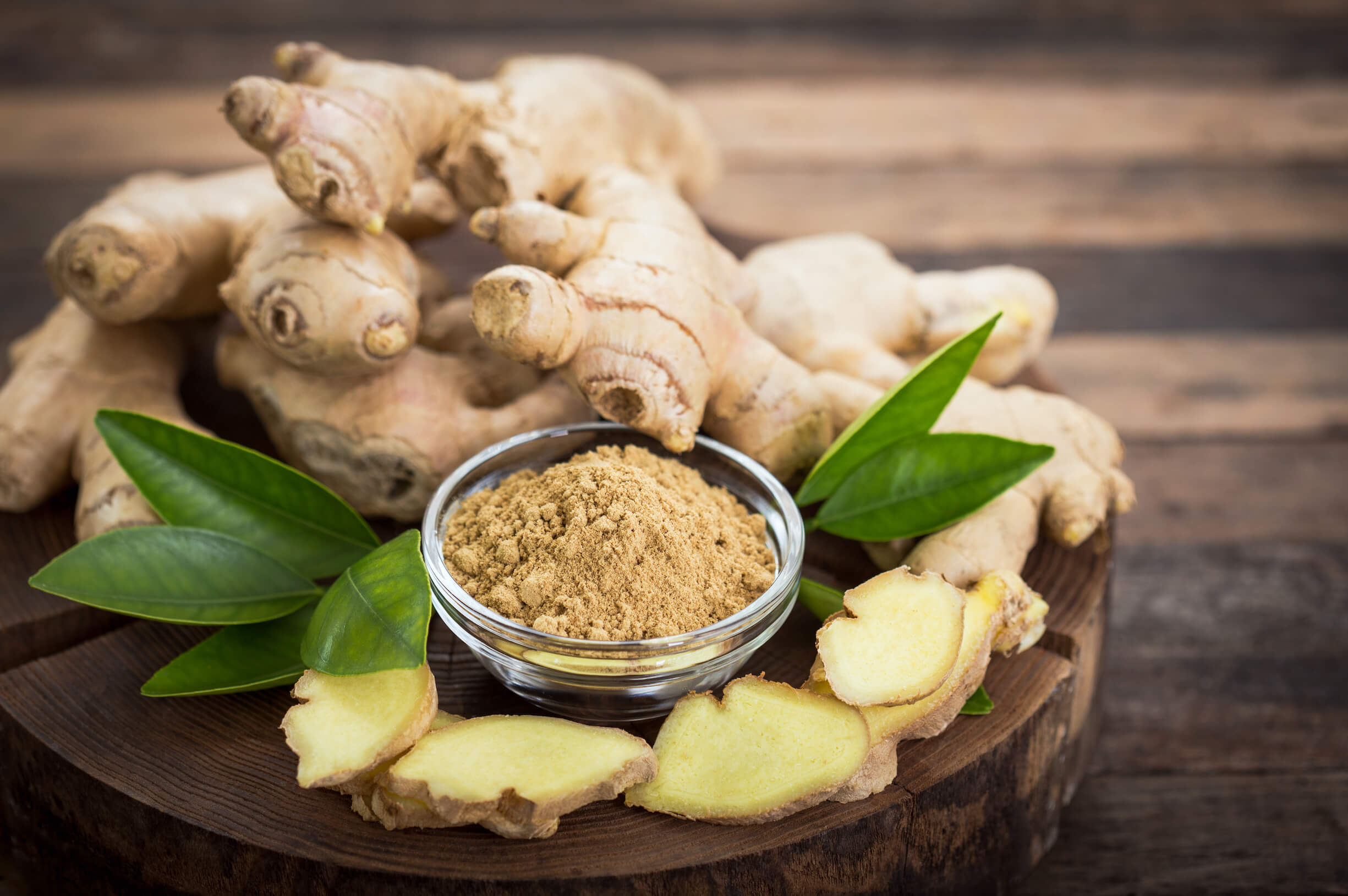
Ginger is another remarkable anti-inflammatory spice. Like turmeric, ginger has been found to be useful for the prevention and treatment of a staggering array of conditions, and it offers general protection against disease due to its powerful antioxidant capacity.
Research has shown that 6-gingerol (one of the active components in ginger) exhibits potent anti-inflammatory properties in inflammatory bone disorders. Ginger may also help increase serotonin levels in the gut and brain, which can reduce inflammation and inflamed blood vessels responsible for migraine headaches.
For more on ginger and how to use it, see our article here.
6. Nuts and Seeds
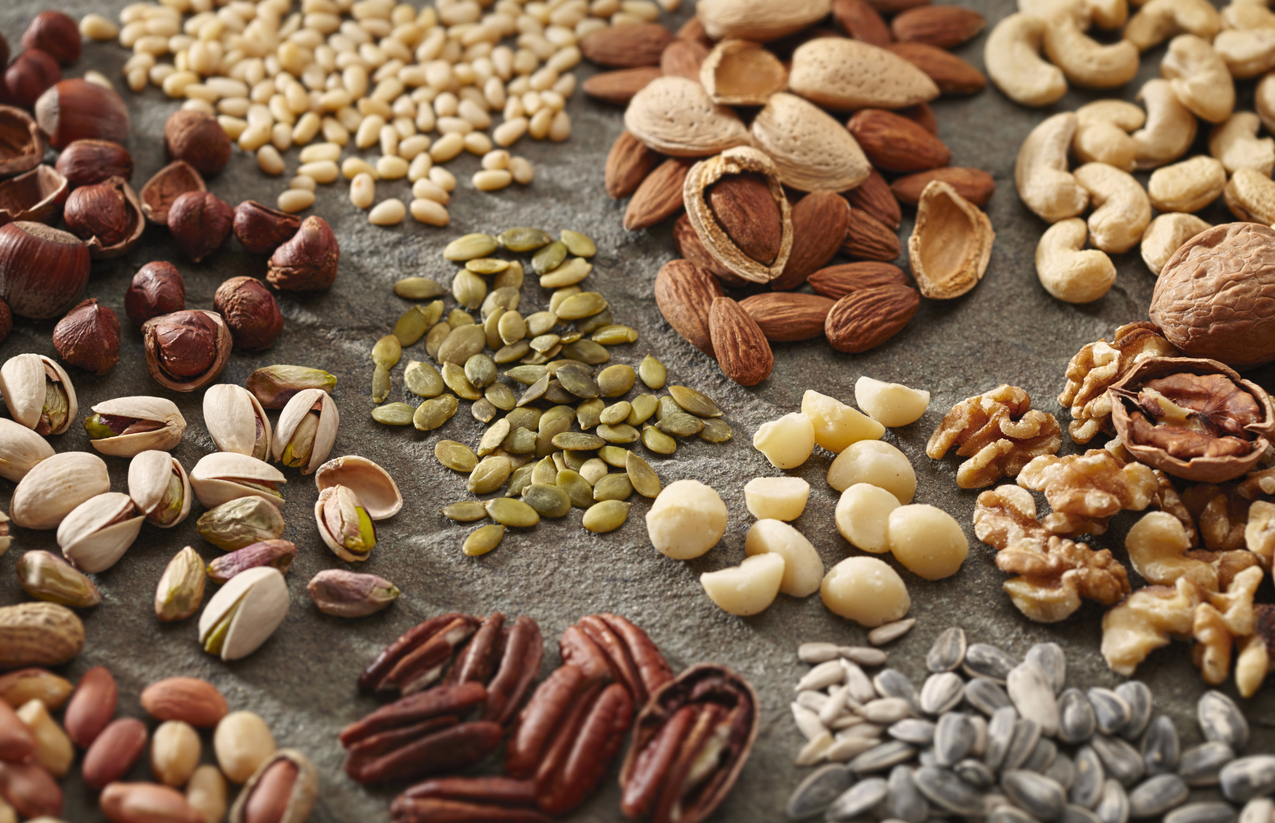
Nuts and seeds fall into the category of healthiest foods on the planet. Eating one ounce of nuts daily may even reduce your overall risk of death by 20% according to a 30-year study. While each type of nut or seed has its own unique health benefits, they share a common component — vitamin E. Known for its antioxidant properties, vitamin E helps your immune system by fighting free radicals and may counteract the accumulation of reactive oxidative species, which can cause DNA and cellular damage.
Some nuts and seeds such as walnuts, flax seeds, and chia seeds are also high in omega-3 fatty acids. Omega-3 essential fatty acids not only work to heal inflammation in the body, but as a result, help maintain proper brain function, regulate mood, and support cardiovascular health. Just make sure to also reduce your intake of omega-6s, which are notoriously high in the modern industrialized diet due to the prevalence of processed and fast foods.
For more on the health benefits of nuts and seeds, see our article here.
7. Cacao
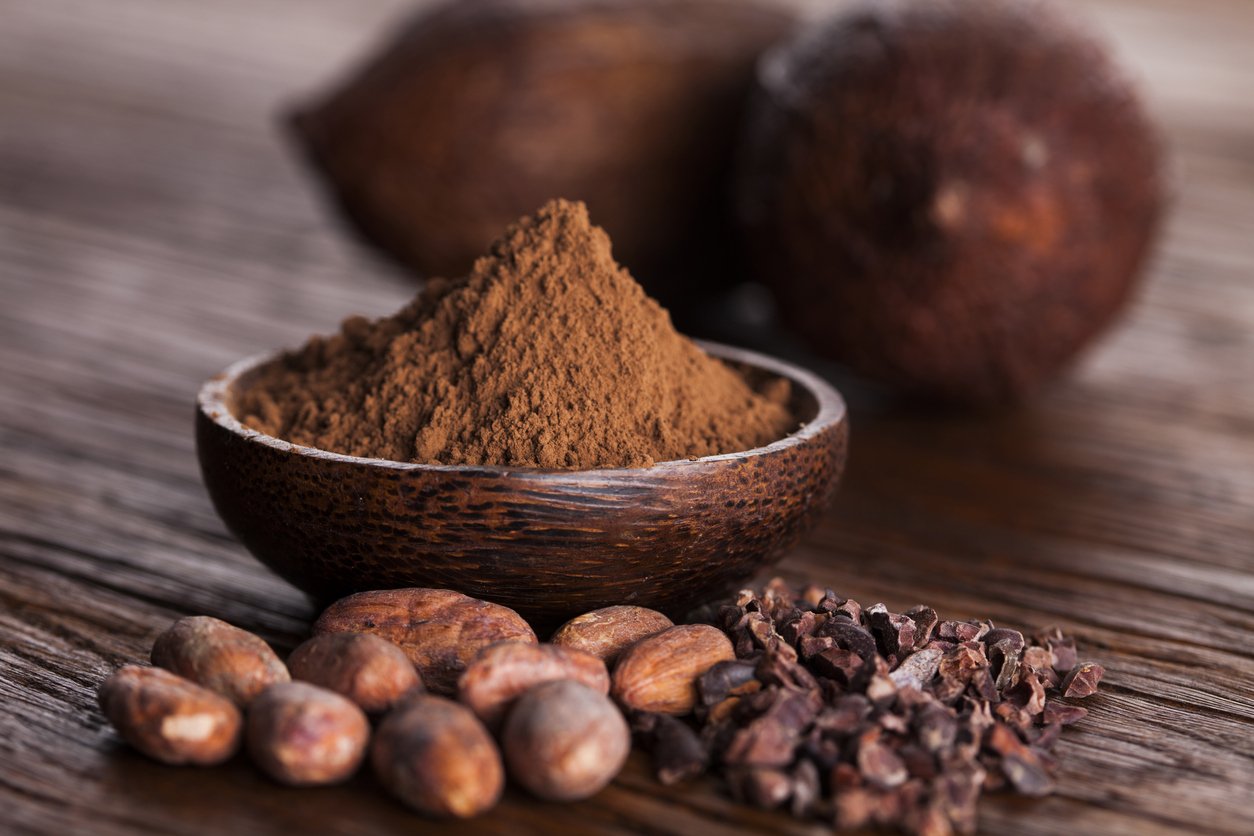
Raw cacao was called “the food of the gods” by the ancient Aztecs — and for good reason. This plant contains over 300 enlivening compounds (many of which are strongly anti-inflammatory), has more antioxidants than high-antioxidant berries like blueberries and goji berries, and is packed with vitamins and minerals. The polyphenols in cacao and cocoa products also have pain-relieving superpowers due to their polyphenol content.
But this doesn’t mean that you should start gorging on Mars bars. To get the optimal anti-inflammatory benefits of cacao, you’ll need to seek out unprocessed and preferably unsweetened cacao nibs, powder, or beans. Dark chocolate and cocoa are also good options if they don’t have added sugar, oils, or dairy. (And with chocolate, choose organic or fair trade if you don’t want to unintentionally finance child slavery.)
For more on the health benefits of chocolate, see our article here.
Anti-Inflammatory Recipes
A good rule of thumb for a supportive anti-inflammatory diet is to include vibrant, whole plant foods as often as you can. We’ve made that an easy task with these tasty recipes, as each one has at least two of the seven top inflammation-fighting plant foods. From berries to ginger to cacao and everything in between, we’ve got you covered with the best ways to harness the magical power of plants!
1. Blueberry Ginger Smoothie
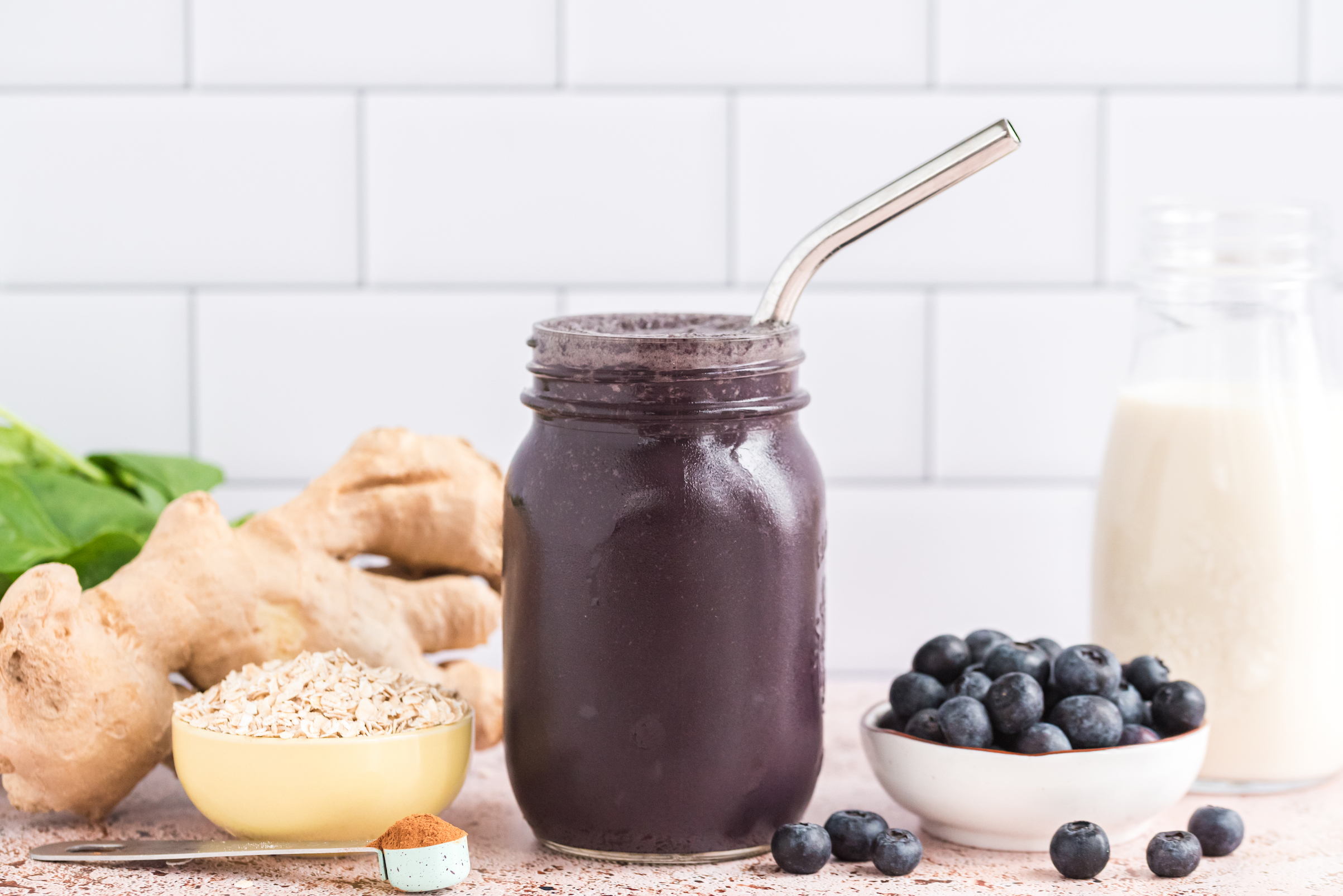
Naturally sweet blueberries, zesty ginger, and earthy greens make a refreshing anti-inflammatory triple combo that is bursting with flavor, brightness, and plenty of antioxidant-rich compounds blended into one supercharged, plant-powered treat! Enjoy this inflammation terminator as an energizing breakfast or an invigorating afternoon delight.
2. Vibrant Bulgar, Kale, and Chickpea Salad
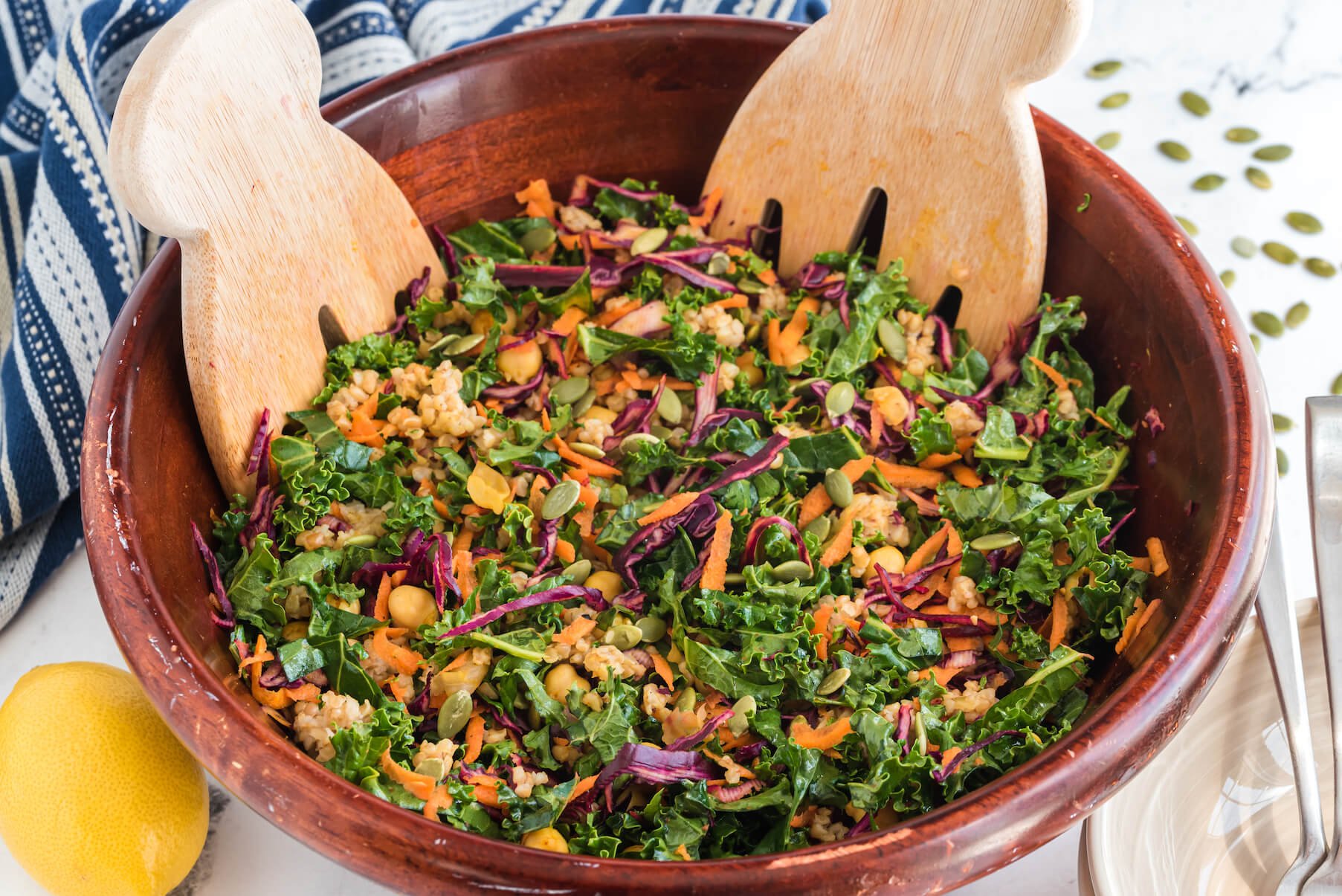
When it comes to a combination of whole plant foods that are high in phytochemicals and antioxidants, this delicious Vibrant Bulgur, Kale, and Chickpea Salad hits the jackpot! Kale, carrots, red cabbage, (turmeric coated) chickpeas, avocado, pumpkin seeds, and bulgur deliver a wide range of anti-inflammatory nutrients that do wonders for your health. Just as the name implies, this vibrant yet soothing salad will have you glowing from the inside out.
3. Cherry Chia Cacao Pudding Parfait

Cherries, chocolate, and chia seeds are an inflammation-busting trio. Full of anti-inflammatory omega-3s from chia seeds, anthocyanins from cherries, and flavonols from cocoa, a few bites of this sweet treat and you’ll be saying, “Hasta la vista, inflammation!”
How to Take Control of Inflammation in Your Body
Chronic inflammation poses serious long-term health risks, affecting hundreds of millions of people around the world. But you don’t have to sit back and allow inflammation to persist and cause damage to your body. Modifying certain lifestyle factors, especially diet, can significantly reduce chronic inflammation. Focus on eliminating inflammatory, omega-6-rich junk foods and processed sugars first — and replacing them with whole foods. Then you can gradually add potent anti-inflammatory foods — including berries, leafy greens, alliums, turmeric, ginger, nuts and seeds, cacao, and other inflammation-fighting foods — to your diet. Adopting an anti-inflammatory diet can help you stave off chronic disease and live a healthier, longer life. And that’s something to sing and dance about!
Tell us in the comments:
- Do you suffer from a chronic inflammatory condition?
- What anti-inflammatory foods are your favorites?
- What other lifestyle factors will you modify to reduce inflammation in your body?
Featured Image: iStock.com/fcafotodigital
